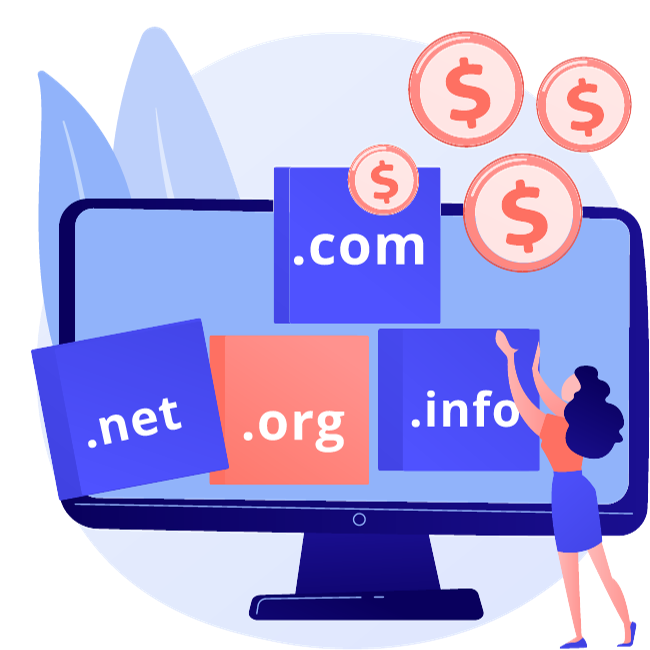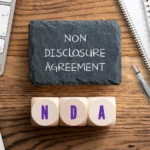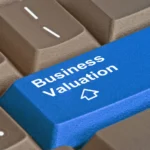If there is one element of your website that is public, it is your domain name. Of course, this is the visible address of your website, so hiding it is not a good idea. However, one facet that you should hide is the personal information that you provide to your registrar. Domain privacy helps solve this problem.
By law, all domains must be attributed to someone, meaning you as the buyer. However, this information is public and that means anyone can access it. That’s not good for your privacy or your inbox.
In this post, we’ll look at domain privacy. We’ll show you how to buy a domain and apply privacy to your information. We’ll also look at some services to help you buy domain privacy.
However, first we will look at the whole concept of domain privacy.
What is domain privacy?
For almost any purchase on the web, you will need to provide vital information. In many cases, this will be your payment details and billing information.
However, some of this information (other than payment details) is optional. If you want to buy a domain through a registrar, you’ll need to follow a similar set of steps to complete the transaction.
The difference here is that your personal information is a critical aspect to continue. In almost all cases, you will need to provide the following:
- Your name
- A relevant email address
- Your business address
- Phone contact details
While it may not be ideal for all consumers, it’s just as understandable as it is with other online purchases.
However, there is a wrinkle: the information you are required to hand over is not private.
The WHOIS database
The Internet Corporation for Assigned Names and Numbers (ICANN) is a non-profit organization that coordinates the maintenance of namespaces on the Internet. In other words, ICANN keeps the Internet stable and secure through its management of Internet Protocol (IP) addresses and the root of the Domain Name Server (DNS).
That means ICANN controls how domain names should be registered. They require each site owner to register their full contact details for each domain they own. It will also make this data public in the WHOIS database:
It is a public access search for every registered domain name. Type in a domain, and this will return the information registered for that domain:
You’ll find information relevant to the domain itself (and its associated nameservers), people’s contact details, and even the raw WHOIS output of the initial transaction.
The database provides some positive benefits, specific to DNS maintenance that we mentioned earlier:
- You can ensure that each domain name is unique and that others cannot compromise a business.
- You can search for the owner of a domain before you register yours. It will help you understand domain ownership and allow you to make the best decision regarding your own domain.
- It can help a site resolve network and administrative issues as you will have access to the address of correct contact email.
Even so, you will often find that WHOIS lookup information is not used with the best of intentions most of the time, hence the need for domain privacy.
Why domain privacy is necessary for all websites
Of course, privacy is an essential component for the web and its users in general. There has been a debate for years about how so-called “big technology” uses the information we pass around.
However, this also extends to domain privacy. It could be argued that it is more vital, as there are around two billion active websites. That’s hundreds of millions of domain names, with potential public user information associated with them.
We alluded to the fact that there were negatives along with positives to being included in the WHOIS database. Here’s why domain privacy is required for all websites:
- You can protect your personal and contact information from public knowledge.
- You’ll get less spam in your inbox and on your phone line. Many malicious users will use the WHOIS database as a free cold calling list. Plus, you can also avoid one of the many scams that often plague site owners.
- There’s less chance of malicious users stealing your domain.
- You have some legal protection for your domain, as you have provided accurate information.
Despite the positives, we suggest that domain privacy is much more important than keeping your information public. After all, most issues have an alternate resolution, and keeping malicious users at bay is a sound policy you should insist on.
Domain Privacy and General Data Protection Regulation (GDPR)
You may already be aware of the GDPR regarding its impact on your web privacy and that of your user within the European Union (EU). You need to understand a little more about how this relates to domain privacy and the WHOIS database in general.
Of course, the GDPR keeps your data safe and secure. So does domain privacy, although there is a key distinction. With domain privacy, you have a forwarding address. That means that if you need to be contacted, someone can legitimately use the WHOIS database to contact you while still allowing you to keep your information private.
Conversely, although the GDPR also ensures that your details are not displayed in the WHOIS database, there is no such thing as a forwarding email address. Therefore, no one will be able to contact you for legitimate reasons. While this isn’t much of a concern given what we said above, it’s still something to keep in mind.
Our advice is to always opt for domain privacy if possible. At this point, it is worth noting that some Top Level Domain (TLD) extensions do not have the opportunity to have private WHOIS entries. This is often related to country-specific TLDs like .us, .uk, and .it, and many second-level domains like .us.com and .net.in.
You will still have the ability to hide your personal data under GDPR, but without the benefits of domain privacy implementation.
How to check if your domains have privacy protection
Before you decide to implement domain privacy on your website, it’s a good idea to check if it’s already been implemented in the first place. It could be that you chose it at checkout and forgot, or it could have been an automatic application.
To find out, go to the WHOIS database and enter the domain name you chose in the search bar:

Once you click the Search button, you will arrive at the WHOIS entry for the domain. In the Domain Information section, you’ll see details about the domain name itself, the registrar, and the registration dates:
Depending on the registrar and domain privacy you use, the details here may be different. Still, the key items to look for are:
An email address that appears to be forwarding messages (such as [email protected])
A name and contact address that appear generic and are not yours.
That’s a great indicator that you have domain privacy turned on. If you see any of your details on this screen (other than what’s in the Domain Information panel), you’ll want to learn how to apply domain privacy.
4 main domain privacy tools and services
A domain registrar will often provide privacy services at the payment stage. The following sections will discuss four different domain registrars or services that offer domain privacy among their offerings.
Let’s start with the most apparent service you should consider.
1. Your own domain registrar
If you own a website, it will often have a domain name to go with it. Choosing a domain registrar is beyond the scope of this piece, though you’ll want to investigate what kind of domain privacy you can access.
Still, the best place to start is with your current registrar because that will be the path of least resistance to implementing domain privacy. Most registrars have a similar control panel:
Here you will find many tools that will help you manage your domain regardless of your task. However, you will notice that there is no explicit “Domain Privacy” option for this particular registrar. Instead, you get Domain Proprietary Protection (DOP).
2. Google Domains
Google needs no introduction, but we may need to give you a hint about one of its newest services: Google Domains.
Google Domains is a great way to buy and manage all your domains, with a familiar panel and reasonable prices.
If you’re a Google Workspace user, your domain registrar is right for you. It’s also worth paying attention to how you handle domain privacy.
It’s called Privacy Protection; it’s free and applied at checkout as standard:
3. Namecheap
The name gives the game away, but Namecheap specializes in profitable domain names. There are many TLDs available and the dashboard is easy to use.
We can also confirm that the registrar is easy to use when managing your domains, such as adding a registry and changing nameservers. It’s a common domain registrar based on price, ease of use, and TLD availability.
We also like the way you can see which of your domains have Domain Privacy turned on. Each domain will have a “shield” logo in a dedicated column:
If you want to take a deeper look at a particular domain, you can hover over that shield and see if domain privacy is explicitly active:

To go even further, you can expand each domain using the arrow icon and see more details about how the domain’s privacy is configured:
The fact that you have three different ways to view domain privacy with Namecheap makes it fantastic for usability. It also means you’ll never forget to turn on your privacy.
4. Cloudflare Registrar
Cloudflare Registrar is a domain name registration service that offers the same services as other domain name registrars but with additional security features.
Following Cloudflare’s focus on security and privacy, you get free two-factor authentication and private WHOIS management by default. They will help you keep your domain and personal information safe. Plus, you don’t need to purchase any additional services to protect your domain name.
The domain name you manage through Cloudflare is also associated with their many products and services. For example, it integrates with Cloudflare’s CDN, DNS, and SSL services.
How to purchase and apply domain privacy for your website
Before we finish, we’ll walk you through the quick process of buying and applying domain privacy. The whole process of buying domains relates to this, so we’re going to touch on that as well.
Note that we use Namecheap here because it’s a common registrar with free (and quality) domain privacy options. However, you can extrapolate our approach and apply it to your chosen registrar. Of course, if your registrar charges for domain privacy as a separate service, you’ll need to factor that into your total cost.
Your first task is to find and add your domain name to your cart:
You’ll then want to click through to the checkout screen, at which point you’ll see the option to add domain privacy to your order:
That’s all there is to buying and applying domain privacy. Most registrars turn it on as standard, and there’s little you’ll need to do other than go through the renewal process if you haven’t opted in to auto-renew.
In short..
Although the Internet is a network of connections between servers, there will often be a real person at the end of each computer. As such, privacy when using the web is a crucial aspect of sensible browsing and website security.
Website owners must also declare personal information to purchase a domain name. Without domain privacy, these details will be public, so keeping them hidden is a critical step.
The good news is that the process is simple. For most registrars, you’ll flip a switch and domain privacy is yours. However, while many registrars provide this service for free, others will charge you when you renew your domain.
Is domain privacy important to you? If not, why? Share your thoughts in the comments below!








